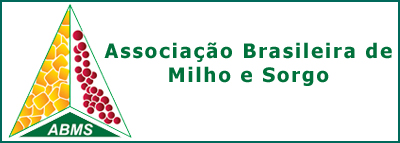CRESCIMENTO E PRODUÇÃO DA PRIMEIRA REBROTA DE CULTIVARES DE SORGO SOB DIFERENTES LÂMINAS DE IRRIGAÇÃO
DOI:
https://doi.org/10.18512/1980-6477/rbms.v16n3p449-459Keywords:
Sorghum bicolorAbstract
RESUMO - Avaliou-se comportamento da rebrota de cultivares do sorgo sacarino e forrageiro no semiárido potiguar sob diferentes lâminas de irrigação. O ensaio foi realizado em março de 2015, nas condições de campo, em um argissolo no município de Upanema-RN, região Nordeste do Brasil. O experimento foi conduzido com delineamento experimental em blocos casualizados completos, em esquema de parcelas subdivididas 4 x (5 x 2), com quatro repetições, sendo quatro lâminas de irrigação (50, 75, 100 e 125% da ETc), e cinco cultivares (duas cultivares sacarinas, BRS 506 e BRS 511, e três forrageiras IPA 467-4-2, IPA SF-15 e BRS Ponta Negra) combinadas com duas densidade de plantio nas subparcelas. As variáveis avaliadas foram as produtividades de massa fresca e seca. Verificou-se que a lâmina de irrigação repondo 100% da ETc proporcionou maior rendimento de biomassa e que as cultivares sacarinas apresentaram baixa capacidade de rebrota, sendo as variedades IPA SF 15, IPA 467-4-2 e a BRS Ponta Negra as mais produtivas.
Palavras-chave: Sorghum bicolor, semiárido, estresse hídrico.
GROWTH AND PRODUCTION OF THE FIRST REGROWTH OF SORGO CULTIVARS UNDER DIFFERENT IRRIGATION BLADES
ABSTRACT - Behavior of re-growth of saccharin sorghum and forage sorghum cultivars in the semi-arid region of the State of Rio Grande do Norte (RN), Brazil, under different irrigation blades was evaluated. The experiment was carried out in March 2015 under field conditions in an argisol in the municipality of Upanema-RN, northeast region of Brazil. The experiment was carried out in a complete randomized complete block design with four replications (4 x 5 x 2), four irrigation blades (50, 75, 100 and 125% of ETc estimated from climatic data of Mossoró-RN) and five cultivars (two saccharin cultivars, BRS 506 and BRS 511, and three forage cultivars, IPA 467-4-2, IPA SF-15 and BRS Ponta Negra) combined with two planting densities in the subplots. Fresh and dry mass productivities were evaluated. The results were submitted to analysis of variance (F test) and the means were compared by the Tukey test at the 5% probability level, using the SAEG 8.1 software. It was verified that the irrigation blade replacing 100% of the ETc provided a higher yield of biomass and that the saccharin cultivars presented a low sprout capacity, with the varieties IPA SF 15, IPA 467-4-2 and BRS Ponta Negra being the most productive.
Keywords: Sorghum bicolor, semiarid, water stress.
Downloads
Published
How to Cite
Issue
Section
License
Authors retain copyright and grant the journal right of first publication with the work simultaneously licensed under the Creative Commons Attribution License that allows the sharing of work and recognition of the work of authorship and initial publication in this journal.
Authors are able to take on additional contracts separately for non-exclusive distribution of the version of the paper published in this journal (eg, in an institutional repository or publish as a book), with acknowledgment of its initial publication in this journal.
Authors are permitted and encouraged to post their work online (eg, in institutional repositories or on their website) at any point before or during the editorial process, as this may leadto productive exchanges, as well as increase the impact and citation of published work.



